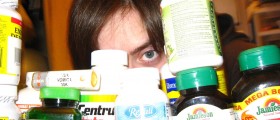
Overall facts
This substance, or vitamin, to be more precise, is known for its vital role that it plays in numerous bodily chemical reactions. That is the main reason why, as soon as the levels of niacin drop, there occurs a condition commonly referred to as pellagra. Among the food sources that abound in this vitamin the most are such as various dairy products, cereals, vegetables and other foods that are rich in proteins. Aside from the above mentioned vital role, niacin can be employed as well as a quite effective means to decrease the cholesterol levels in a person’s blood.
Lack of niacin and the possible dangerous implications it can have
Deficiency in niacin is the condition that is regarded to be the direct consequence of pellagra. As such it is thought that the most appropriate grounds for its occurrence were underdeveloped countries. Unfortunately, that was not quite the case and it is now officially known that the US is under its influence. The danger lies in the fact that in case of those more serious cases it can even be fatal. The lack of niacin causes no less than three other directly related condition, i.e. dermatitis (or skin rash), diarrhea and lastly cognitive dementia (also known as the progressive loss of memory).
The vitamin itself is known under yet another name – Vitamin B3 and it represents one of the vital nutrients responsible for keeping the health of our skin on a high level, as well as the health of the mouth and the digestive tract. In addition, it is also responsible for maintaining our mental functions healthy. However, since most facts known to people are positive in nature, little attention has been paid to the possible downsides, especially those occurring due to its deficiency, as well as due to the effects it has on our blood pressure and high density lipoprotein (i.e. the good cholesterol). Our bodies employ this vitamin when there is a need for the carbohydrates to be converted into sugar, i.e. glucose commonly used as a vital energy source. As a part of the treatment, niacin is employed for its potential to increase the levels of the good cholesterol, but since it is given in rather high dosages, it needs to be approved and prescribed by your doctor prior to taking it.
Despite the fact that niacin deficiency and its negative effects on the levels of cholesterol in one’s blood are yet to be thoroughly investigated and findings made more concrete, so far it is evident that the lack of niacin in fairly serious cases leads to one illness, and that is pellagra. To make the matter even more difficult, this can occur in two distinct manners:
Genuine niacin deficiency in a person’s diet that occurs as a direct consequence of the lack of dietary intake and intake of the proper supplements, andDeficiency that occurs as a direct consequence of the improper absorption by the person’s body and not as the consequence of the improper intake or too small quantities.The initial indicators can be first detected on the skin that gains in red color followed by the scaling, which in the course of time progresses and transforms into a rash. Other indicators include occurrence of lesions, particularly affecting the limb area, then various gastrointestinal manifestations such as diarrhea, nausea and vomiting, as well as manifestations neurological in nature such as apathy, loss of memory, mild depression, all the way to those more sever ones like intensive headaches, delusions, tremors, and psychosis.

















Your thoughts on this
Loading...